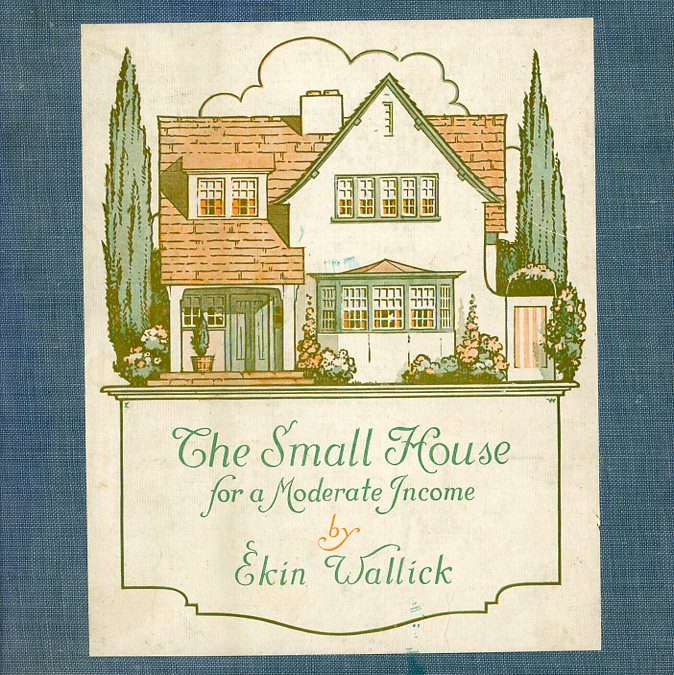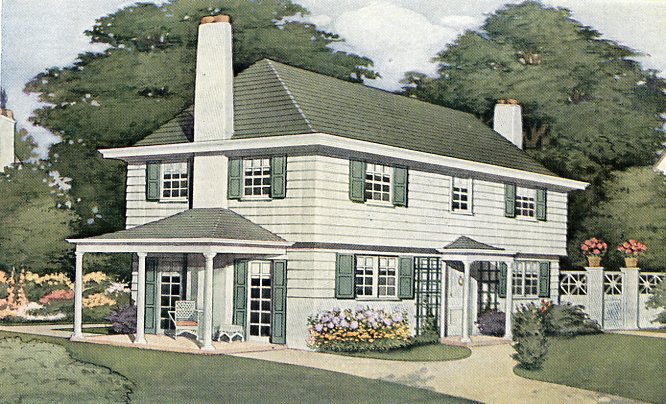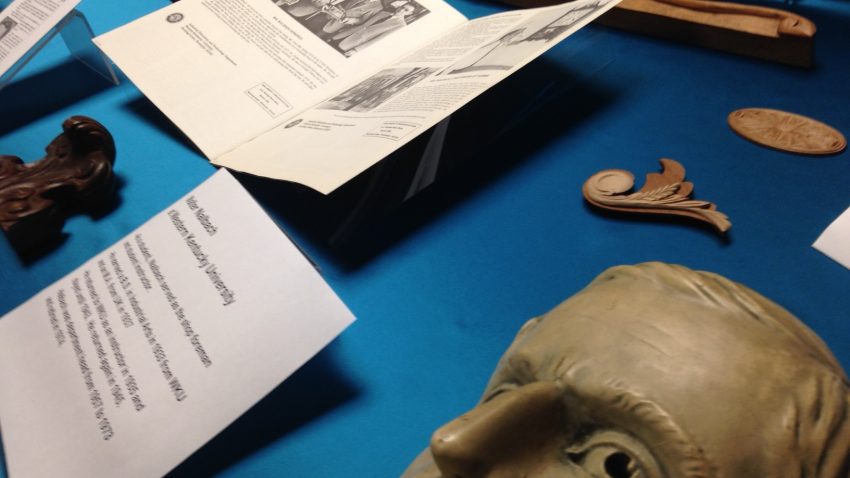The Department of Library Special Collections is pleased to add the first acquisition using funds from the Jonathan Jeffrey Architectural Endowment Fund. It is a slim volume titled The Small House for A Moderate Income by Ekin Wallick. The book printed in 1915 by Hearst’s International Library Company features lovely, pastel illustrations of home exteriors and interiors, as well as floor plans, for seventeen homes of varying sizes and styles. Wallick is no wall flower author; he has definite opinions about design, building materials, subdivision planning, color palettes, etc. He saves particular disgust for the multiple architectural styles that ran rampant in the late-nineteenth century, “the Early Victorian Era, a period of abortions both in the building and decorating of houses. We can now look back on this period with a keen sense of disgust and fully realize that we are on the threshold of great achievement in the matter of house building,” Ekin wrote. He goes on to call the Era “one of mediocre architectural achievement. There may be many excuses put forth for the unitelligence of the time, but the fact still remains that it was most decidedly an architectural blot on our national escutcheon.”
Nearly ten years ago, I began pondering what I could leave, a legacy if you will, at WKU once I had completed my career. With the help of our then development officer Carrie Barnette, I concluded that one of the best enduring legacies would be an endowed acquisition account that would funded by my estate upon my demise. That sounded a little grim, but it fulfilled my purpose and represented one of my passions, as I decided that the endowment would be dedicated to purchasing books, printed material, or architectural drawings for the Kentucky Library Research Collections and the Manuscripts units of the Department of Library Special Collections and/or the housing and exhibition of the same. Although we have very fine collections, limited acquisition funds sometimes hamper us for purchasing significant items for the collection when they become available on the market. I really didn’t want to wait until my death to establish the account, so Carrie mentioned that we could begin a fund and I could add to it rather painlessly by having a payroll deduction go directly into it. I could also use that as a gift to the university and thus have a tax deduction each year. Two years ago I reached the minimum amount of $10,000 in the endowed account. I could not have done this in a single lump sum gift.
I am so pleased to select this book to begin the legacy. It is a perfect example of the evolution of architectural styles, steering away from the old, tried examples of the Victorian Era and defining the Colonial Revival as America’s new style of choice. This book, geared toward families with moderate incomes eliminates the excessive ornamentation and asymmetrical massing found in many Victorian Era homes. The slightly self-righteous Wallick declares the new American style “free from affectation, a concrete crystallization of common sense. The American architect…strives for unbroken lines in his exterior designs, for he knows by experience that they add decidedly to the dignity and charm of the house.”
To search other architectural related items in the Department of Library Special Collections, search KenCat.




